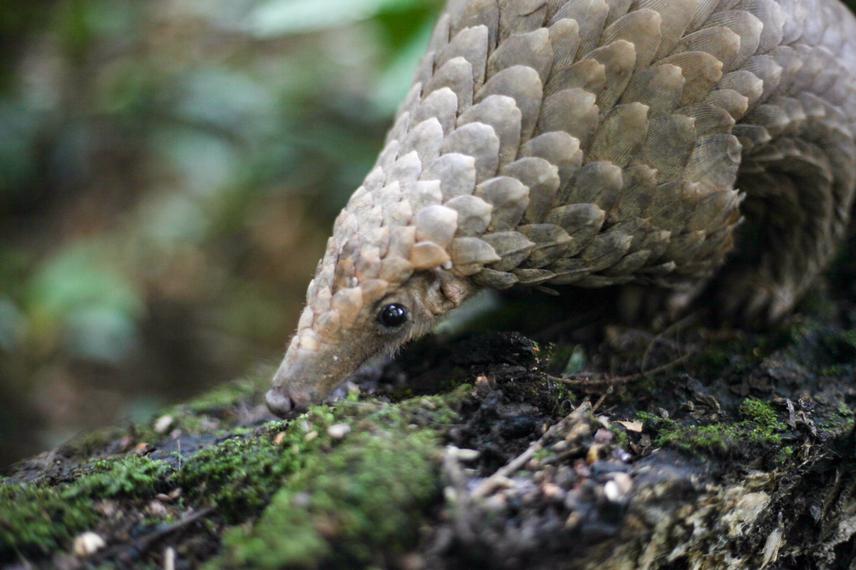Social media video featuring the project.
Prince Pascal Agro
Other projects
12 Dec 2018
Status, Distribution, and Abundance of Vulnerable African White Bellied Pangolin (Phataginus tricuspis) in Human-Dominated Forest Landscapes around the Asukese Forest
14 Dec 2022
Improving the Long-Term Viability of Populations and Habitats of the Endangered, White-Bellied Pangolin in Asukese Forest Reserve, Ghana
In this second grant, we will expand our field inventory efforts to cover major forest blocks (i.e. production, cultural sites, hill sanctuaries, and convalescence areas) using both active (visual searches day and night) and passive (camera trapping) approaches to obtain more detailed data on pangolins and their locations within the Asukese forest reserve. We plan revisiting earlier surveyed areas to ascertain habitat changes and non-hunting compliance. We also aim to scale up our school and community education programs to promote pro-pangolin conservation behavior among fringe communities to safeguard the threatened and vulnerable populations of pangolins in the Asukese Forest Reserve.

All three (3) species of pangolins known to occur in Ghana, i.e. the white-bellied pangolin (Phataginus tricuspis), black-bellied pangolin (Phataginus tetradactyla), and the giant ground pangolin (Smutsia gigantea), have been categorized as ‘endangered’, and ‘vulnerable’ respectively on the IUCN Red List of Threatened Species (IUCN SCC, 2019), CITES put them under appendix I i.e. species “threatened with extinction” (CITES, 2016). Besides, the Wildlife Conservation Act of 1971 (LI 685) in Ghana classifies pangolins under Schedule1, which strictly prohibits any individual from hunting or owning pangolins.
During our first Rufford funded project, our field inventories in Asukese Forest Reserve revealed that two pangolins species (Phataginus tricuspis, and Phataginus tetradactyla) inhabiting the Asukese FR were highly threatened and may be heading towards local extirpation. Our previous project further revealed that habitat destruction through excessive illegal logging, illegal hunting, and trade of pangolins mainly as bushmeat were the key threats to the existing pangolin populations in the study area.
In this second grant, we aim to expand our field inventory and monitoring efforts to cover more areas of the forest including previously surveyed areas. We will achieve this through the initiation of comprehensive field surveys covering the main forest blocks (i.e. production, cultural sites, hill sanctuaries, and convalescence areas). We will adopt both passive and active methods comprising visual searches (day and night) and camera trapping approaches to obtain data on pangolins and their locations. We also aim to scale up our conservation education, awareness-raising, and local capacity development activities to promote pro-conservation behavior among local communities to safeguard the dwindling populations of two pangolin species in Asukese Forest.
During this project, we will revisit earlier surveyed areas to monitor, and assess changes in the pangolin population, and hunting trends by using pangolin encounter rates and illegal activity (empty cartridges) encounter rate as abundance indices. These threat indices will enable us to obtain first-hand information on the current conservation challenges to pangolins in Asukese Forest. Ultimately, this second grant will provide a rare opportunity for school kids, teachers, and community members to learn about the pangolins habitat, the importance of forests, and what people can do to help protect pangolins. It will enable us to sensitize, raise awareness, and increase inhabitants’ local ecological knowledge on the current plight, habitat threats, and conservation needs of pangolins in Asukese Forest.